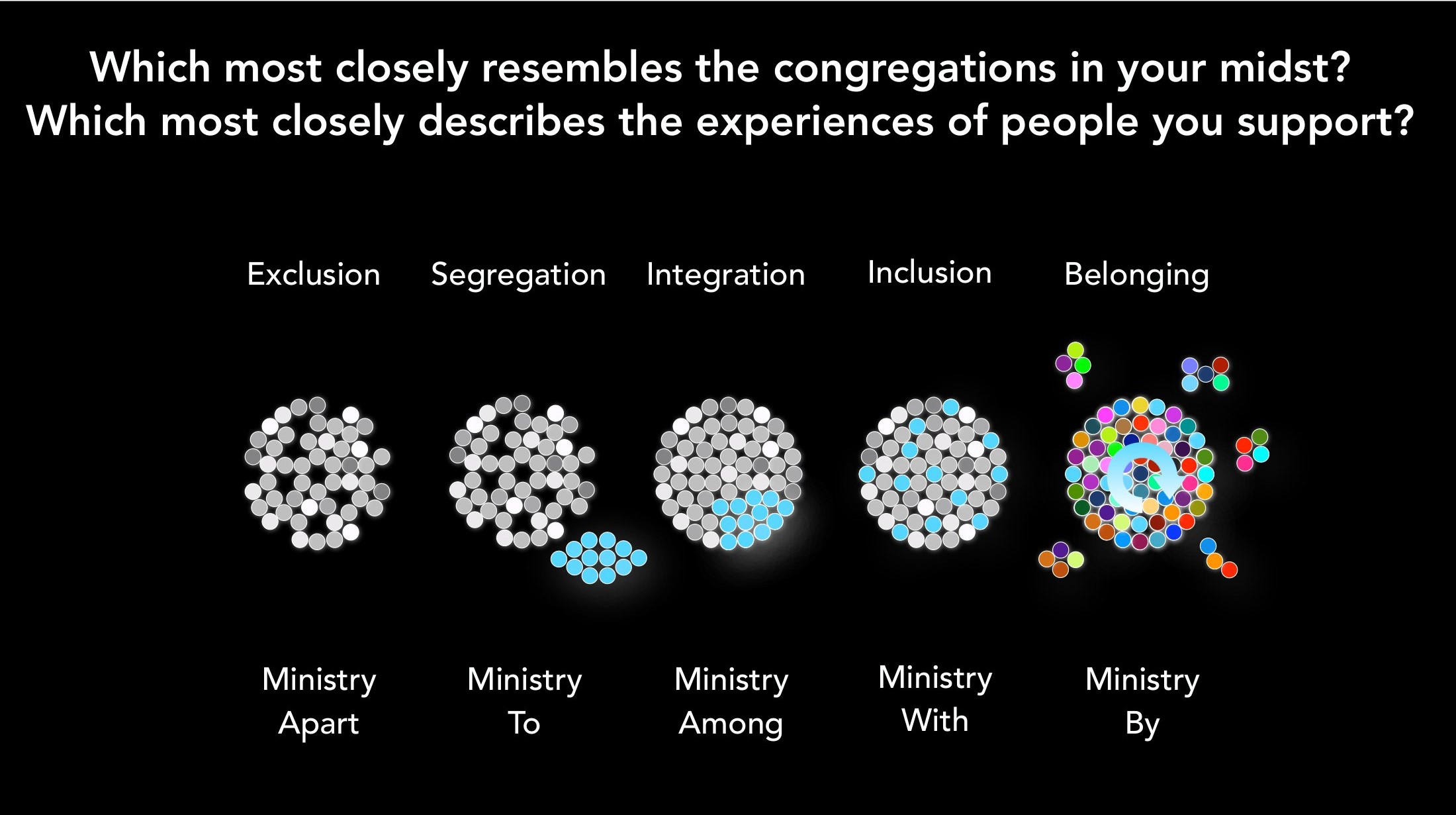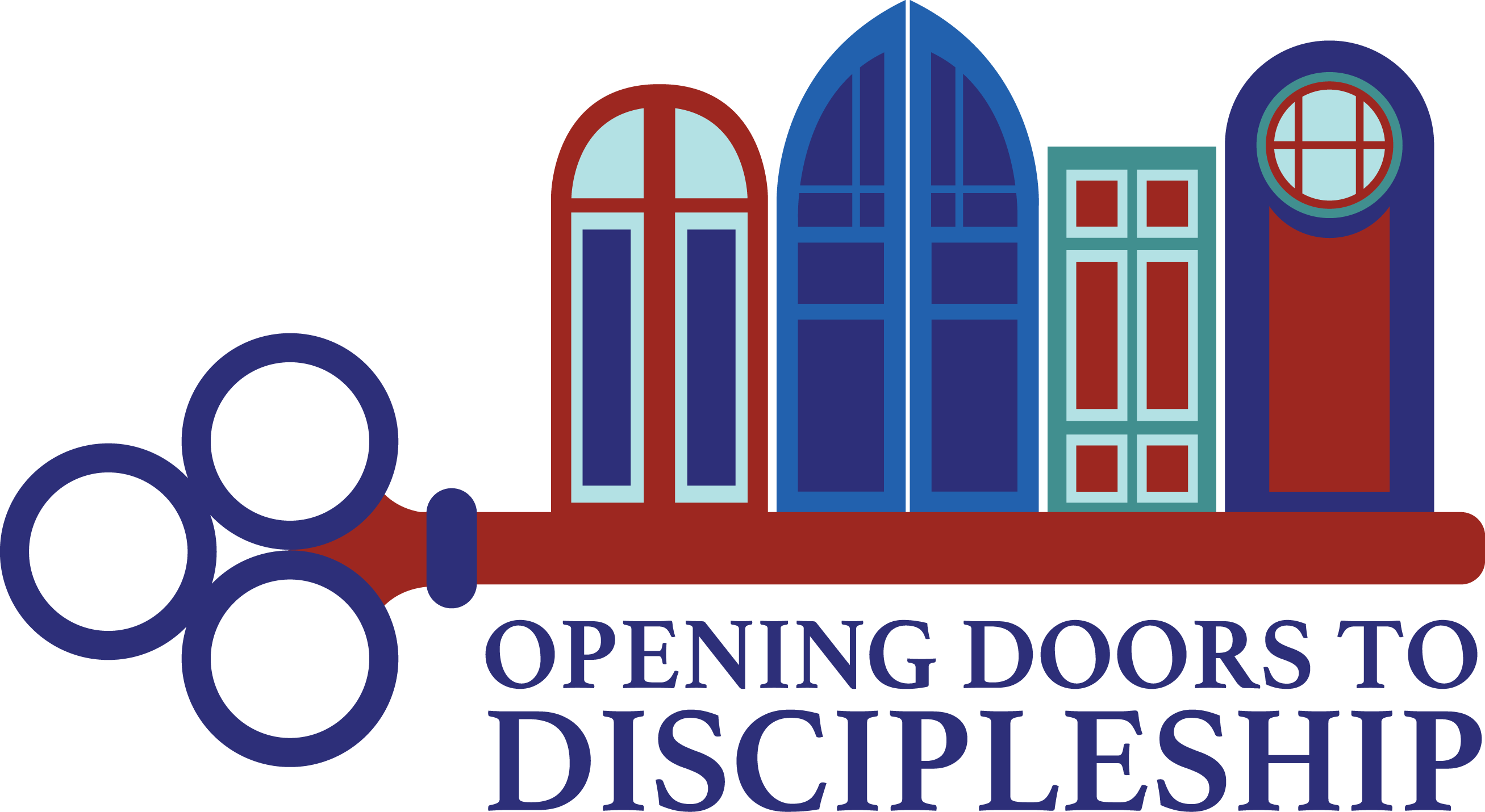
Disability Inclusion for Ministry
Welcoming All, means making sure that those with disabilities can participate fully in the life of the faith community. How are we doing this? Are we making sure that all are given the opportunity to participate and to lead?
Disability exists on a spectrum and so does the kind of support each congregation can provide. There are as many types of disabilities and accommodations for those disabilities as there are stars in the sky. Accommodations don’t have to be expensive or intimidating for congregations. The spectrum below was first shared by Erik Carter, a professor at Baylor University in a webinar entitled, “From Exclusion to Embrace: Supporting Inclusion and Belonging from Both Sides of the Doors.” Where is your congregation on this spectrum when it comes to welcoming, including, and allowing leadership by disabled people in your midst?

We can make our congregations more accessible and welcome new people and the gifts they have to share with us. This space is here to guide you on how you can do just a little bit better so that the whole family of God can be just that, whole.
Engaging Disabled People
In this first video, Katie Snyder introduces herself, defines disability, and gives some first steps for engaging disabled people.
Engaging Disabled Adults
Disability exists on a spectrum, and there are three common disabilities that happen with aging: mobility, hearing loss and deafness, and vision loss and blindness. These are good places for congregations to begin their journey of inclusion.
Including Children and Youth with Disabilities
There is no one-size-fits-all solution for including children and youth with disabilities in your congregation. In this video, Katie gives ideas for how to tailor a plan to each individual situation.
Below, you will find several resources for including disabled people:
Embracing Neurodiversity
Part 1 Video
In this video, Pepa Panigua defines neurodiversity and explores why it’s important for congregations and faith communities to embrace and create inclusive spaces neurodiverse individuals.
Part 2 Video
In this video, you will learn how to broaden your language, including embracing terms that are less pathological and more inclusive.
Part 3 Video
In the final video, Pepa proposes some ideas for moving towards belonging, including ways to give neurodiverse individuals a voice and leadership in our contexts.
Closing Prayer
Lord of all creation, whose life, death, and resurrection remind us that death is not the end. Give us eyes to see beyond our own perspective. Give us hearts to accept beyond what is so-called “normal.” Remind us that loving others starts with us loving and accepting ourselves. Because no matter what our body looks like, or is able to do or not do, You made us carefully, and purposefully. You dare us to show the world that every single one of us, regardless of our ability, has something to give to Your beautiful creation. All blessing, honor, and glory are Yours, now and forever. Amen.
